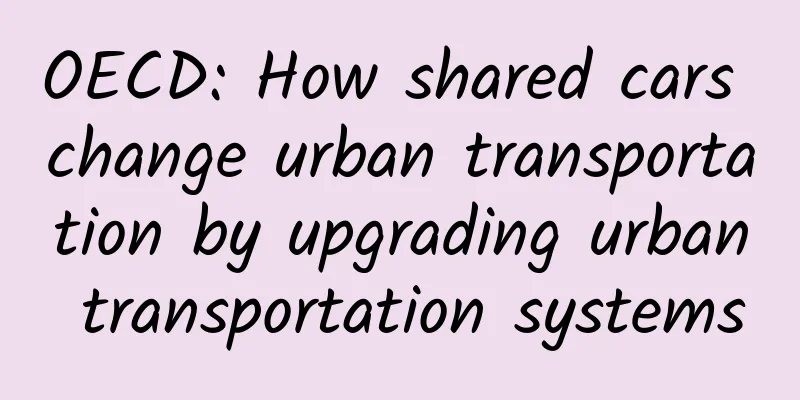Do you like to hoard things and can't bear to throw them away? This may be a disease...

|
Hoarding behavior is widely observed in various animals and humans. Most of the time, hoarding is an adaptive behavior: squirrels store chestnuts for the coming winter, ants work together to pull a large caterpillar into their nest, and Arctic foxes hide bird eggs for emergency use... Humans are also masters of hoarding. Our ancestors would early on store newly harvested grain into barns, put pickled vegetables into jars, and air-dry leftover meat in preparation for emergencies. However, "degree" is a criterion for measuring whether a behavior is adaptive - when an adaptive behavior exceeds a certain degree, it may become an inadaptive behavior. Have you ever heard of such a person? The bed is filled with all kinds of packaging boxes and bags, the bookshelf is piled with outdated magazines and books that are not read once a year, the cupboard is crowded with express boxes and home-made dishes, and the worn-out clothes that are reluctant to throw away occupy half of the wardrobe... In more serious cases, hoarding can take on pathological characteristics. For some people, it is particularly difficult to throw away things, even if these things are simply useless or even considered garbage in the eyes of others. Image source: Xiaohongshu Some people also excessively collect seemingly useful things: they buy large amounts of rice and flour online and never finish them until they are past their expiration dates; they pick up waste cardboard, newspapers, and plastic bottles and fill their homes from floor to ceiling with them, making it difficult to walk around the room. What is surprising is that sometimes they are reluctant to throw away the unfinished food and “store” it in every corner of the house. Pathological hoarding behavior can damage family relationships. Individuals often argue with their family members about whether to keep or remove the hoarded items. Family members who cannot win the argument may even choose to leave rather than continue to stay in this suffocating family space. Young family members are also easily misunderstood and considered to be uncaring for the elders in the family. Pathological hoarding behavior can also destroy neighborhood harmony. After all, no one wants to smell the stench of their neighbor's house when they open the door, not to mention a rat jumping out of the door from time to time. Hoarding disorder has been included in the fifth edition of the Diagnostic and Statistical Manual of Mental Disorders. It is estimated that 1.5% to 2.5% of people meet the diagnosis of hoarding disorder. Although some people's hoarding behavior does not meet the diagnosis of hoarding disorder, their hoarding behavior may also have a very negative impact on their lives. If this relatively loose standard is followed, the proportion of people affected by hoarding disorder symptoms may reach 5.8%. Some signs of pathological hoarding often appear in adolescence or early adulthood, but more serious hoarding disorders usually appear in middle-aged and elderly people, suggesting that hoarding behavior may be gradual and aggravated by certain life events. People often find it difficult to understand excessive hoarding. Is it caused by poverty? Some people are indeed in poor economic conditions, and hoarded items (such as waste cardboard) may indeed be exchanged for money, which can give the hoarder a certain degree of security. However, most people in poor economic conditions will not develop hoarding disorders - even if they collect waste, they will dispose of it quickly and will not pile it up at home. Some people with hoarding disorder buy large quantities of certain types of goods, which suggests that they are not financially disadvantaged. Therefore, there is no necessary link between hoarding disorder and poverty. From a psychological perspective, one of the reasons why people with hoarding disorder cannot “let go” is that they have ideas about these hoarded items that are difficult for ordinary people to understand. They often think that these things are useful, should not be wasted, and can help them recall some special experiences. They may also personify the hoarded items, thinking that they need to be protected by themselves. If they are forced to give them up, they will not only feel sad and anxious, but also blame themselves. Therefore, when family members throw away these hoarded items without their permission, they usually fight back to "defend" and "protect" these things. Possessing these things also gives them a sense of security and comfort, even joy and pride. These things become very important and are seen as an indispensable part of a person's life. The reason for such a deep emotional connection with hoarded objects may be related to the fact that the social needs of people with hoarding disorder are not met. Everyone has a basic need for social connection. We all hope that there are people in the world who are worthy of our love, and we also hope that we are loved by these people. This deep relationship makes us feel safe, comfortable and warm. We can also feel our own value from such a relationship. In real life, people with hoarding disorder often live alone, which itself suggests that they lack such a deep relationship. Hoarding behavior often makes people stay away, which is more likely to lead to social isolation rather than warm interpersonal relationships. Some people believe that hoarding disorder is more likely to occur when social needs are not met and individuals transfer their attachment to others to objects. Some people who develop hoarding disorders may have developed the idea early in life that other people are unreliable. Such people, whether or not they develop hoarding disorders, are less willing to attempt to build deep relationships with others. They are also more likely to develop deep attachments to certain objects to compensate for the lack of interpersonal relationships. Some people with hoarding disorder may have had high-quality interpersonal relationships in the past, but when such relationships are lost (such as the death of a family member), they may turn their attachment to others to certain objects and seek comfort and solace from them. At first, hoarding behavior may be understandable, perhaps just because you can't bear to throw away some things, so you buy more things, or occasionally pick up some things. Over time, hoarding becomes more and more serious, the definition of "useful" becomes more and more personalized, and slowly the house will be filled with all kinds of "useful" things. Loneliness is a common feeling experienced by people with hoarding disorder. They often have a low opinion of themselves and feel that they are not worthy of love. Therefore, individuals who develop hoarding disorder may not only have a special view of the hoarded objects. How they view themselves, how they view others, and how they see themselves in the eyes of others are all important parts of understanding a person with hoarding disorder. Author: Wang Kui, PhD in Psychology Associate Researcher, Institute of Psychology, Chinese Academy of Sciences Second-level psychological counselor Editor: Dong Xiaoxian Reviewer: Zhang Chao, Li Peiyuan |
>>: A major project that humans delayed for 7 years was repaired by beavers overnight?
Recommend
How Tik Tok acquires traffic and how to increase it!
Today I want to share with you how companies can ...
Why are there so many termites recently?
Mixed Knowledge Specially designed to cure confus...
The 4G network speed of the mobile phone has slowed down. Learn to add a new access point to speed up the network.
Hello, everyone. This is the villager's life....
LeTV's Peng Gang: Good smart hardware products should be done in moderation
In the traditional toy development industry, the ...
Gathering thousands of contestants and creating hundreds of intelligent entities, Volcano Engine's first AI Creator Competition promotes the intelligent development of the automotive industry
Recently, the first Volcano Engine Creator Compet...
Narrative Change Training Camp: From Passive to Active, Make Your Life More Controlled
Narrative Change Training Camp: From Passive to A...
Curious question for the Year of the Snake! What does the world look like from the perspective of a snake?
Review expert: Wang Lei, National Park and Nature...
The secret to increasing user conversion rates for high-priced products!
What should we do if our product prices are much ...
How do insects chat?
Produced by: Science Popularization China Author:...
Don’t buy this kind of balloon! Why?
Audit expert: Zhou Hongzhi Senior Experimentalist...
Amid internal and external troubles, is Samsung considering splitting up and rebuilding itself or cutting off its arms in the short term?
On November 29, Samsung announced that it was con...
Tips for building personal private domain traffic
The concept of private domain traffic has been ta...
Event Operation: Is your event ineffective?
Organizing activities is the daily work of our op...
Why is your APP not as good as others? Because you didn't make it "come alive"!
Many CPs are saying that my APP framework and con...
Baidu bidding ranking, what should we pay attention to in bidding ranking?
Baidu bidding is actually a paid form of bidding ...









